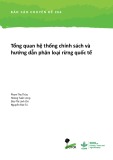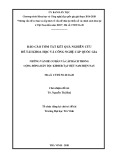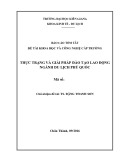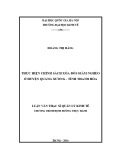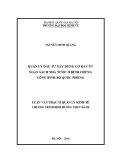
RESEARC H Open Access
The mental health of populations directly and
indirectly exposed to violent conflict in Indonesia
Sherly S Turnip
1,2*
, Ole Klungsøyr
3
, Edvard Hauff
1,3
Abstract
Background: Large disasters affect people who live both near and far from the areas in which they occur. The
mental health impact is expected to be similar to a ripple effect, where the risk of mental health consequences
generally decreases with increasing distance from the disaster center. However, we have not been able to identify
studies of the ripple effect of man-made disaster on mental health in low-income countries.
Objectives: The objective was to examine the hypothesis of a ripple effect on the mental health consequences in
populations exposed to man-made disasters in a developing country context, through a comparison of two
different populations living in different proximities from the center of disaster in Mollucas.
Methods: Cross-sectional longitudinal data were collected from 510 Internally Displaced Persons (IDPs) living in
Ambon, who were directly exposed to the violence, and non-IDPs living in remote villages in Mollucas, Indonesia,
who had never been directly exposed to violence in Mollucas. Data were collected during home visits and
statistical comparisons were conducted by using chi square tests, t-test and logistic regression.
Results: There was significantly more psychological distress “caseness”in IDPs than non-IDPs. The mental health
consequences of the violent conflict in Ambon supported the ripple effect hypothesis as displacement status
appears to be a strong risk factor for distress, both as a main effect and interaction effect. Significantly higher
percentages of IDPs experienced traumatic events than non-IDPs in all six event types reported.
Conclusions: This study indicates that the conflict had an impact on mental health and economic conditions far
beyond the area where the actual violent events took place, in a diminishing pattern in line with the hypothesis of
a ripple effect.
Background
A number of factors have been identified as having an
impact on the mental health of populations affected by
disasters [1-3]. The geographical distance from the cen-
tre of the disaster is one of the factors that is likely to
influence such an impact. This has been described as
the ripple effect of a disaster, and posits that mental
health problems spread outward from the center of dis-
aster in a diminishing ripple pattern [4-6]. Disaster spa-
tial zones describe the area at the center of disaster as
“area totally destroyed”,theimmediateareaaroundthe
disaster center as “partially destroyed area”, and the area
adjacent to the impact area as the “filter zone”[7].
In populations, exposure level is a fundamental
determinant of the mental health effects of disasters
[8,9]. Previous studies indicate that those directly
exposed to severe incidents are likely to have the highest
risk of PTSD and other psychiatric problems [10], and
the risk of mental health consequences generally
decreases with increasing distance from the disaster
agent and decreasing exposure of affected individuals
[11].
Man-made disasters often causemorefrequentand
more persistent psychiatric symptoms and distress than
natural disasters [12]. Man-made disasters with a high
degree of community destruction, and those in develop-
ing countries, are associated with the worst outcomes
[13]. A meta-analysis of mental health of displaced per-
sons indicated that internally displaced persons and
those who fled due to unresolved conflict were most
affected and had the worst mental health outcomes com-
pared to the refugees lived in developed countries [14].
* Correspondence: sherly.saragih@gmail.com
1
Division of Mental Health and Addiction, Institute of Clinical Medicine,
Faculty of Medicine, University of Oslo, Oslo, Norway
Turnip et al.Conflict and Health 2010, 4:14
http://www.conflictandhealth.com/content/4/1/14
© 2010 Turnip et al; licensee BioMed Central Ltd. This is an Open Access article distributed under the terms of the Creative Commons
Attribution License (http://creativecommons.org/licenses/by/2.0), which permits unrestricted use, distribution, and reproduction in
any medium, provided the original work is properly cited.







